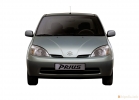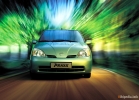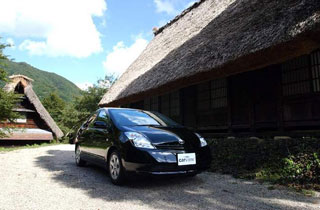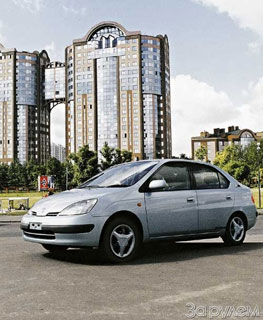Toyota Prius 1997 test drive - 2004 hatchback
Toyota Prius car overview
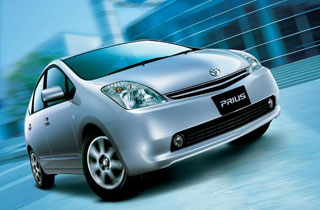 General
General On September 1, 2003, the second generation of the Toyota Prius hybrid car was presented. The first generation Prius was developed to harmonize the machine with the environment and appeared in October 1997 as the world's first hybrid car of mass production. Thanks to the combination of a gasoline engine and electric motor, it was possible to increase the efficiency of fuel consumption and significantly reduce energy loss. As a result of this, when moving in urban mode, fuel consumption was only 3.2 l/100km.
Since the technology was new, of course, some opportunities for improvement remained. This concerned an unusual feeling of driving, which can be called specific for a hybrid car, as well as the reliability and resource of the battery. As a result of small modernization in May 2000 and other events, the designers managed to increase the degree of completion of the machine. At the moment, the total number of sales in the country and abroad has reached 123 thousand units, which allows you to safely declare the leading position of this model among hybrid cars in the world.
The hybrid car market continues to grow, and fierce competition is expected, since in addition to manufacturers within Japan, it is announced to introduce a large three American companies on this market during the year. It seems that in this situation, Toyota will increase the commodity potential of hybrid cars, take the initiative in their market, which is important from the point of view of prospects, and especially strive to strengthen competitiveness in Europe and America. This time, Prius for the first time in six years underwent a complete change of model. And its new generation was developed on the basis of four modernization (modernization of functions and equipment, modernization of decoration and packaging, modernization of the chassis, modernization of environmental characteristics) to achieve the best characteristics in all these areas. Next, we will familiarize you with the essence of modernizations in the new Prius model, the name of which comes from the Latin word with the meaning of ahead.
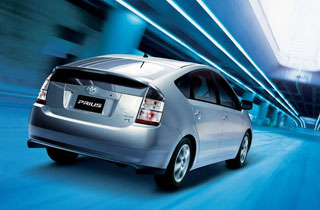 Functions and equipment
Functions and equipment In the new Prius model, first of all, the modernization of functions and equipment attracts attention. Thanks to the fast access and starting function, you can keep the remote control key in the portfolio or pocket, and the door locks open when approaching the machine. After you got into the car, the engine is turned on with a simple press of the switch button. Early in the morning or at night, you can quietly move out of place if you turn it on the button on the electric motor.
In addition, for the first time in Japan, electronic transmission controls were used. The switching lever is installed on the left below the steering wheel, its handle is constantly in the middle position and is easily controlled by the fingertips. The transmission used is indicated on the central display, which is easily visible, since the steering wheel is used. Switching to the parking position is easily made by any transmission by pressing the parking switch.
Further, at a public show, the smart parking function (IPA, Intelligent Parking Assist), used for the first time in the world, was admired. It consists in the fact that the driver on the rear guide monitor sets an arbitrary position, and the computer automatically drives the car in accordance with it, driving a steering wheel with an electric drive and accelerator. When arriving at a multi -storey parking lot and garage, the driver only monitors safety and works with the brakes. This system will become a reliable assistant for novice drivers (who do not get parking well) if they get used to working with the monitor.
In addition, an automatic inverter air conditioner is used that cools and drying even when the engine is turned off (for the first time in the world is used on serial cars), side glasses with a fogging function, windshield with an infrared radiation delay, etc. Thus, functions that are convenient for humans and the environment are improved.
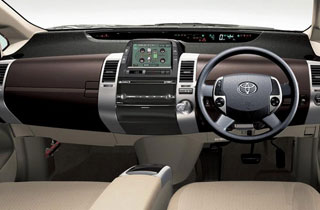 Design and mechanism
Design and mechanism Individual design is filled with a futuristic sensation, the motive of which is a triangular shape with a cabin in the form of a center. So the style is expressed in which the movement is foreseen. Attention is paid to the movement of air back, the middle part of the roof is located low, the side glasses have a voluminous surface, the bottom of the case became flat, which allowed to obtain excellent aerodynamic characteristics (CD \u003d 0.26).
In the new Prius model, the dimensions increased as follows: length up to 4445 mm (135 mm), width up to 1725 mm (30 mm), and the height remained unchanged (1490 mm). As for the size of the cabin, the length reached 1890 mm (an increase of 40 mm), a width of 1440 mm (an increase of 40 mm), and the distance between the bottom of the front and back row of the seats was 950 mm (an increase of 40 mm), which ensures the spaciousness of middle class level.
In addition, thanks to the use of the rear door, which has become one of the most significant changes, the luggage volume was 460 liters (an increase of 70 l). Comfortable has significantly improved compared to the previous model, and in combination with a variety of seats, the possibilities of use have increased. The auxiliary window is combined with the back door, which provides a rear review. It looks like one whole with the LED stop-signal of the posterior combined headlight, which further emphasizes the width of the rear.
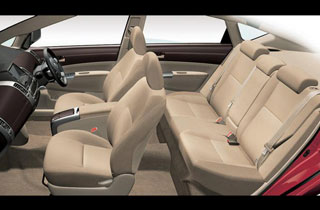 The power block has become the main element in the modernization of the chassis and environmental characteristics. It installed a new generation of THS II, developed on the basis of the concept of a hybrid synergistic drive, which simultaneously improves efficiency and power. In Ths II, an electric motor with a power increased one and a half times is combined with a 1.5-liter engine that has improved characteristics. This allows you to develop the maximum power of more than 111 hp. at 85 km/h and maximum torque 48.7 kg-m at 22 km/h (on the previous model, respectively, more than 101 hp at 120 km/h and 42.93 kg-m at 11 km/h). Thus, a greater level of receipt at starting and overtaking is ensured than that of a car with a 2.0-liter engine. At the same time, such a reaction to acceleration and smooth riding without shocks when switching speeds is ensured, which is characteristic of hybrid systems.
The power block has become the main element in the modernization of the chassis and environmental characteristics. It installed a new generation of THS II, developed on the basis of the concept of a hybrid synergistic drive, which simultaneously improves efficiency and power. In Ths II, an electric motor with a power increased one and a half times is combined with a 1.5-liter engine that has improved characteristics. This allows you to develop the maximum power of more than 111 hp. at 85 km/h and maximum torque 48.7 kg-m at 22 km/h (on the previous model, respectively, more than 101 hp at 120 km/h and 42.93 kg-m at 11 km/h). Thus, a greater level of receipt at starting and overtaking is ensured than that of a car with a 2.0-liter engine. At the same time, such a reaction to acceleration and smooth riding without shocks when switching speeds is ensured, which is characteristic of hybrid systems. In addition, due to an increase in the size of the case and the improvement of the equipment, the weight should have increased compared to the previous model by 170 kg, but at the final stage it was possible to reduce the level of an increase to only 30 kg. This is the result of the efforts of manufacturers, which reduced the weight of 140 kg due to measures such as the execution of the hood and the rear door of aluminum.
As a result of a combination of these technologies, it was possible to reduce the fuel consumption by 15%, so the new Prius model at a speed of 35 km/h in urban mode reached the indicator of 2.82 l/100km, ahead of the Honda Insight hybrid car, which was considered the best in the world (2.86 l/100km in Similar mode). Naturally, all modifications have reached the ultra -low exhaust level.
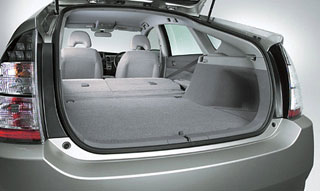 In addition, thanks to the use of the S-VSC synchronous control system and steering, which is considered the first in the world, we can expect an improvement in controllability and stability during movement.
In addition, thanks to the use of the S-VSC synchronous control system and steering, which is considered the first in the world, we can expect an improvement in controllability and stability during movement. Toyota began work with the new Prius model to improve the quality of products, during which the persons responsible for the supply called preachers of quality, guide quality control among manufacturers of parts. This allows you to expand the sphere of activity from primary suppliers to suppliers of the second and third order to improve quality. As the first step towards this, the new Prius model is made with the desire for the zero level of marriage at the final stage.
Thus, in addition to the latest perfect technologies and functions, the new Prius model gives a feeling of calm from the zero level of marriage. Therefore, we can say that it is turned into a car corresponding to its hybrid cars to its name ahead. As for the price, in class S it is 1 million 150 thousand yen (~ $ 13000) - 30 thousand yen less than the previous model, and for other classes it is installed at the same level with the previous ones, and this is visible persistent Toyota's desire to spread hybrid cars. Undoubtedly, the new Prius model will attract attention not only in Japan, but also in the markets of Europe and America, where it will also be sold.
A source: CarView.co.jp


